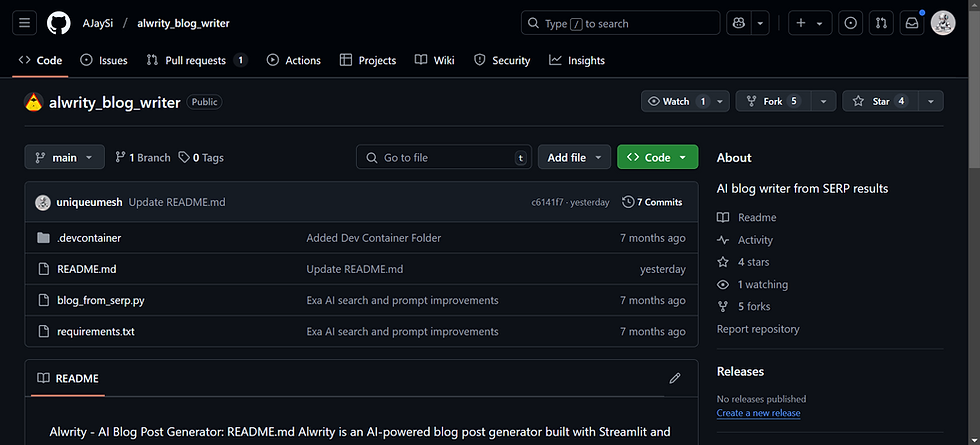Few-Shot prompting for AI Creative writing
- DikshaAI
- May 16, 2024
- 3 min read
Prompt engineering, the art of crafting effective prompts for large language models (LLMs), is constantly evolving. One powerful technique, gaining popularity for its ability to guide LLMs towards specific outputs, is few-shot prompting.
What are Few-Shot Prompts?
Few-shot prompts involve providing a small number of examples (typically 1-5) of the desired output before asking the LLM to generate its own. This approach works on the principle of "learning by example," allowing the LLM to understand the pattern and style you're seeking. It's like showing a student a few solved problems before asking them to solve a new one.

How Few-Shot Prompts Work
Input Examples: You provide a set of input examples that demonstrate the desired output format, style, or structure.
Prompt: You include the input examples in your prompt, along with a clear instruction for the LLM to generate a similar output.
LLM Response: The LLM processes the examples and uses them to guide its response, producing an output that aligns with the pattern you provided.
Benefits of Few-Shot Prompts
Increased Accuracy: By providing examples, you guide the LLM towards a specific style, format, or tone, leading to more accurate and relevant outputs.
Improved Specificity: Few-shot prompts can be used to generate content with specific characteristics, such as a particular tone of voice, genre, or writing style.
Enhanced Creativity: By introducing different input examples, you can inspire the LLM to explore new ideas and generate more creative outputs.
Examples of Few-Shot Prompts in Action:
1. Summarizing Articles:
Input Examples:
Article: "The benefits of exercise are well-documented. Regular physical activity improves cardiovascular health, boosts mood, and reduces the risk of chronic diseases."
Summary: "Exercise improves cardiovascular health, mood, and reduces disease risk."
Prompt: "Here are some examples of summarizing articles: [Input Examples]. Summarize this article: [Article text]."
2. Translating Sentences:
Input Examples:
English: "The cat sat on the mat."
Spanish: "El gato se sentó en la alfombra."
Prompt: "Here are some examples of English-to-Spanish translations: [Input Examples]. Translate this sentence: 'The dog chased the ball.'"
3. Writing Code:
Input Examples:
Input: "Write a function that returns the sum of two numbers."
Code: "def sum_two_numbers(a, b): \n return a + b"
Prompt: "Here are some examples of code generation: [Input Examples]. Write a function that returns the product of two numbers."
4. Creating Story Prompts:
Input Examples:
Prompt: "A young woman discovers a magical amulet."
Story Start: "The dusty attic held treasures forgotten by time, and as Amelia sifted through forgotten trinkets, her fingers brushed against something cold and smooth. It was an amulet, intricately carved with swirling patterns, and as she held it, a warmth spread through her."
Prompt: "Here are some story prompts and their beginnings: [Input Examples]. Write the beginning of a story based on the following prompt: 'A knight stumbles upon a hidden portal in the woods.'"
5. Generating Poetry:
Input Examples:
Prompt: "Write a poem about the beauty of nature."
Poem: "The sun, a golden orb, paints the sky,A canvas vast, where colors fly.Green leaves dance, a gentle sway,As nature's symphony, it plays."
Prompt: "Here are some examples of poems: [Input Examples]. Write a poem about the joy of friendship."
6. Creating Social Media Captions:
Input Examples:
Image: A picture of a delicious meal
Caption: "Food coma incoming! This meal was unreal �� #foodie #delicious"
Prompt: "Here are some examples of captions: [Input Examples]. Write a caption for this image: [Image link]."
7. Writing Product Descriptions:
Input Examples:
Product: A cozy blanket
Description: "Wrap yourself in the warmth and comfort of our plush fleece blanket. Perfect for snuggling up on the couch on a chilly evening."
Prompt: "Here are some examples of product descriptions: [Input Examples]. Write a description for this product: [Product name and details]."
8. Generating Headlines:
Input Examples:
Article Topic: New study reveals the benefits of meditation.
Headline: "Meditation: A New Path to Well-being, Study Finds"
Prompt: "Here are some examples of article headlines: [Input Examples]. Generate a headline for this article: [Article topic]."
9. Creating Quiz Questions:
Input Examples:
Topic: History
Question: "In what year did World War II begin?"
Answer: 1939
Prompt: "Here are some examples of quiz questions: [Input Examples]. Create a quiz question about [Topic]."
10. Writing Dialogue:
Input Examples:
Characters: Two friends discussing a movie
Dialogue:
Friend 1: "Did you see that movie last night? It was incredible!"
Friend 2: "Yes, I loved it! The special effects were amazing."
Prompt: "Here is an example of dialogue: [Input Examples]. Write a dialogue between two friends discussing their favorite hobbies."
Conclusion
Few-shot prompting is a powerful technique for leveraging the capabilities of LLMs. By providing specific examples, you can guide the AI towards your desired output, leading to more accurate, creative, and tailored results. As the field of AI continues to evolve, few-shot prompting will likely play an increasingly important role in unlocking the full potential of LLMs.





Comments